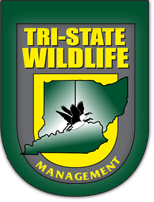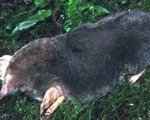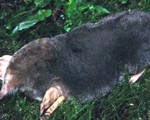Are moles destroying your lawn? Call Tri-State Wildlife Management today so we can rid your yard of pesky moles!
The old saying “Don’t make a mountain out of a molehill” was clearly coined by someone who never had a mole problem in their yard! Moles can be very destructive to a lawn, and it can be difficult to rid your property of them. Moles create both deep tunnels that are undetectable, as well as surface tunnels, which are very shallow. In addition, as moles tunnel and move dirt out of their way, they can create mounds of dirt at the surface. Moles tunnel up to eighteen feet per hour and move forward and backward eighty feet per minute in the tunnel. During bouts of hot or cold temperatures, moles continue to make more deep tunnels, so even though you didn’t see mole activity during the winter, they were just as active, but undetectable. Moles are opportunistic feeders and consume almost any insect they find. Earthworms are the main component of their diet; however, insects including grubs, ants and ant larva make up their diet as well.
Moles are unwanted guests in a yard because their surface tunnels and dirt mounds are unsightly. More importantly, mole tunneling kills plants and grass. Soil insulates plant roots, and when that is taken away, cold weather freezes the roots, thus killing the plant or grass. In addition, during the warmer months, roots will dry out without having access to water in the soil. To prevent this from happening to your lawn, give us a call today!
Tri-State Wildlife Management is fully licensed and insured, and we stand behind all our work
For garden mole removal and control in Northern KY, call Tri-State Wildlife Management at (859) 635-0037. Put our experience and expertise to work for you!












